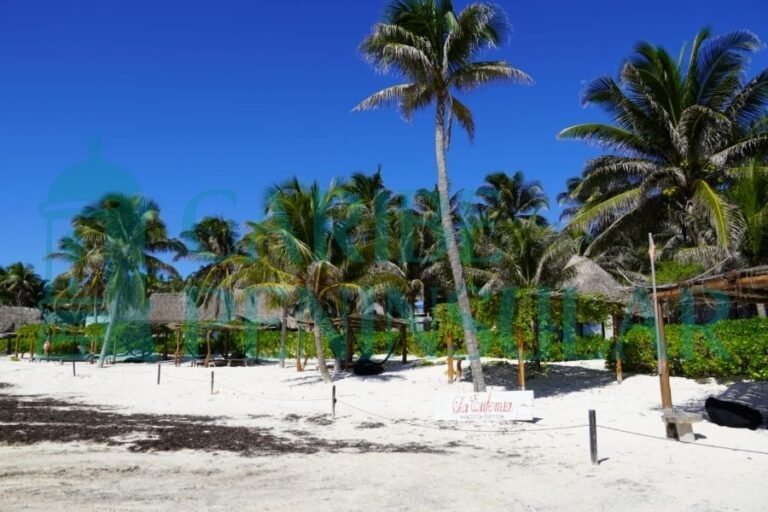Cancún — The tourism crisis currently facing Tulum did not take anyone by surprise, stated the former head of the Ministry of Agrarian, Territorial and Urban Development (Sedatu), Román Meyer Falcón, noting that an oversupply of real estate, uncontrolled urbanization, and a lack of planning led to the destination’s current collapse.
In September 2025, hotel occupancy fell to 49.2 percent, compared to 66.7 percent recorded a year earlier, while Cancún and Bacalar maintained levels above 65 percent. “The difference reflects that the problem is not with tourism, but with the form of growth that was promoted,” he warned.
Meyer Falcón considered the instruction from President Claudia Sheinbaum to review the management of the Jaguar Park and the access fees to the beaches to be timely, as it “seeks to correct a model that confused expansion with development.”
An Uncontrolled Model and an Opportunity for Correction
Tulum was born as the “anti-Cancún”: a low-density destination with a natural aesthetic and authentic experiences. However, that narrative became a justification for urbanizing without control. In a few years, thousands of apartments and hotels were built—some with values exceeding ten million pesos—while a good portion of the streets remain without pavement, drainage, or sidewalks.
“The real estate boom did not translate into collective well-being, and the property tax, instead of being reinvested in infrastructure, was lost in weak urban administration,” he emphasized.
During the previous administration, a model of urban containment was promoted in the Tren Maya corridor to curb this expansive pattern. In the case of Tulum, given the municipal intention to triple its urbanized surface area—from 1,140 to more than 3,000 hectares—a first phase of growth of 60 percent over ten years was established, conditional on consolidating services and infrastructure before opening a second stage. In neighboring municipalities, such as Bacalar and Felipe Carrillo Puerto, the maximum authorized growth was 17 percent and 8 percent, respectively.
In parallel, the Jaguar Park was developed, conceived to preserve the surroundings of the Tulum archaeological zone, which is surrounded by three Natural Protected Areas. The project incorporated the former 300-hectare airfield to create an environmental belt that would contain urban expansion and improve the transition between the city, jungle, and heritage.
The park is currently administered by the Sedena, through the Grupo Olmeca-Maya-Mexica, responsible for its operation and promotion. The former official insisted on the need to consolidate comprehensive access to this space, with differentiated and accessible fees, to ensure that the common good is not restricted to luxury tourism.
According to the Mexican Civil Council for Sustainable Forestry, based on data from Conafor and INEGI, between 2019 and 2023 the Yucatán Peninsula lost 285,580 hectares of forest cover, primarily due to agricultural and urban expansion. In that same period, the Tren Maya right-of-way—1,554 kilometers long by 40 meters wide—represents just 2 percent of that loss.
“The problem does not come from the railway project, but from an uncontrolled territorial model that has also impacted Tulum: irregular subdivisions, logging, and disorderly growth are the real threat to its ecosystem,” he pointed out.
Meyer Falcón argued that the Tren Maya can be an opportunity for correction, by consolidating a regional development model based on environmental and cultural preservation. “Its central purpose is not the train itself, but to connect the Mayan vestiges with sustainable tourism that generates local prosperity,” he explained.
Among the measures he proposes to correct Tulum’s course are:
- Halting urban expansion beyond the agreed limits.
- Strengthening regulations and urban image.
- Investing in public spaces and basic services.
- Making the use of property and hotel occupancy taxes transparent.
- Halting the smuggling of national lands.
- Maintaining free access to beaches and archaeological heritage.
- Reinforcing regional planning with a focus on territorial equity.
“The crisis in Tulum is not a tourism problem, it is an urban and territorial one. To continue growing without order would be to repeat the mistake. What is at stake is not just the future of one destination, but Mexico’s capacity to build a new relationship between tourism, territory, and community,” concluded Meyer Falcón.
“The paradise is not lost overnight; it is eroded among streets without services, cleared jungles, and privatized beaches,” he stated. “To consolidate does not mean to stop, but to learn to mature as a society.”
Discover more from Riviera Maya News & Events
Subscribe to get the latest posts sent to your email.
